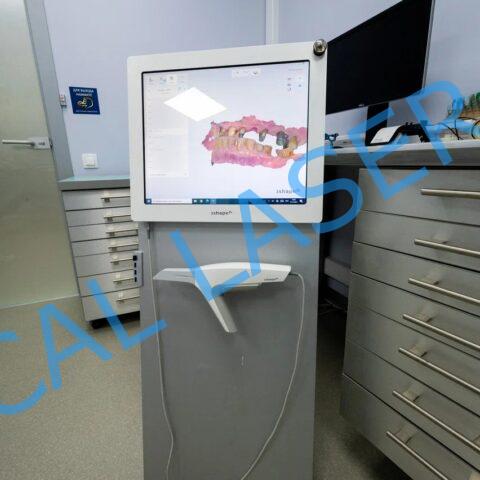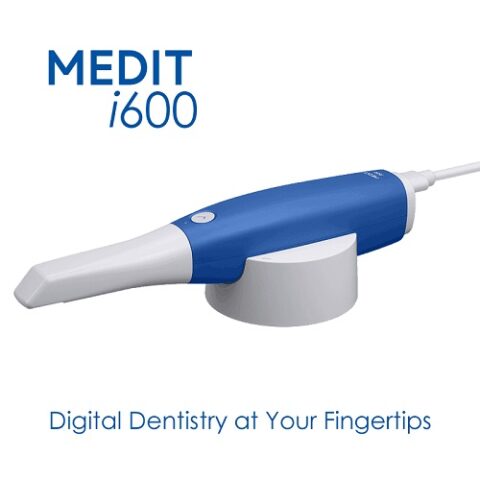What is an Intraoral Scanner?
An intraoral scanner is a medical device used in dentistry to create digital impressions of the oral cavity. Unlike traditional impression methods that use materials like silicone or alginate, this scanner uses optical technology to capture detailed surface images of the teeth and gums digitally.
How Does It Work?
- Scanning: The dentist directs the scanner into the patient’s mouth. The scanner is equipped with a small camera that emits light onto the surface of the teeth and gums, then captures images of the reflected light.
- 3D Image Creation: These images are then processed by software on a computer to create a 3D model of the teeth and oral tissues. This process is usually very fast and accurate.
- Analysis and Treatment Planning: The resulting digital model can be used to plan treatments, such as creating crowns, bridges, or orthodontic aligners. This technology allows the dentist to view and analyze the model with high detail.
- Fabrication of Dental Appliances: The digital model can be sent directly to a dental laboratory to fabricate restorations like crowns or veneers, or to a 3D printing system to print dental appliances directly.
Benefits of Intraoral Scanners
- Patient Comfort: Eliminates the need for physical impressions, which can be uncomfortable and messy.
- Accuracy: Scans are typically more accurate than traditional impressions, which helps improve the fit and outcome of dental treatments.
- Efficiency: Scanning is quicker than traditional impression-taking processes, reducing the time needed to get results and proceed with treatment.
- Digital Integration: Allows for easier integration with other software systems, such as digital design and manufacturing software.
- Visual Quality: Provides clear and detailed visualizations of the oral structure, aiding in diagnosis and treatment planning.
Common Applications
- Dental Restorations: Such as crowns, bridges, and veneers.
- Orthodontics: Creation of aligners and planning of orthodontic treatment.
- Dental Implants: Planning and fabrication of dental implants.
- Measurement and Monitoring: Tracking changes in the oral structure over time.
Intraoral scanners are becoming increasingly popular in dental practices due to their significant benefits in terms of comfort and accuracy.
Showing all 6 results







